Chiropractic Adjustment in Costa Rica
Search and Compare the Best Clinics and Doctors at the Lowest Prices for Chiropractic Adjustment in Costa Rica

Find the best clinics for Chiropractic Adjustment in Costa Rica
No clinics available
Singapore offers the best prices Worldwide
Price: $ 44

- Home
- Costa Rica
Compare Before & After Photos of _procedure_photos.phpChiropractic Adjustment
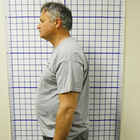

Full-side view
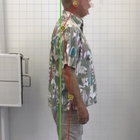
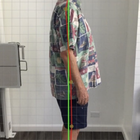
Full-side view
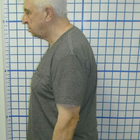
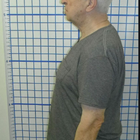
Full-side view


Full-side view
WHY US?
At Medijump, we're making medical easy. You can search, compare, discuss, and book your medical all in one place. We open the door to the best medical providers worldwide, saving you time and energy along the way, and it's all for FREE, no hidden fees, and no price markups guaranteed. So what are you waiting for?

Free

Best Price

Widest Selection

Risk-Free
What you need to know about Chiropractic Adjustment in Costa Rica

A chiropractic adjustment, also known as spinal manipulation, is a procedure that is performed to improve spinal motion and enhance the body’s physical function by bringing the bones of a joint back to their normal, natural position. The procedure is performed by trained specialists (chiropractors) who use their hands or a small instrument to apply a controlled, sudden directional thrust into a spinal joint. Besides chiropractors, physical therapists and osteopathic physicians may be trained and licensed to perform chiropractic adjustment as well.
Some of the most common conditions for chiropractic adjustment are low back pain, neck pain, and headache.
What is the cost of Chiropractic Adjustment in Costa Rica?
Several variables, including the intricacy of the patient's illness, the chiropractor's experience, and the location of the clinic, can have a considerable impact on the price of the Chiropractic Adjustment in Costa Rica. Budgeting for this treatment must take these things into account. Despite the cost, keep in mind that this is a safe, all-natural therapy option that could spare you from needing to undergo costly procedures or take prescription medication for an extended period of time.
What does a Chiropractic Adjustment Procedure Involve?
During a chiropractic adjustment, you will lie down on a specifically designed chiropractic table so the chiropractor can administer treatment. Your position on the table can vary depending on your problem or diagnosis. Most often, the chiropractor will ask you to lie face down. The chiropractor will use their hands to apply a controlled, directional force to a joint. This movement is designed to push the joint beyond its usual range of motion. You may hear cracking or popping sounds as your joints are moved by the chiropractor during a treatment session.
How Long Should I Stay in Costa Rica for a Chiropractic Adjustment Procedure?
A typical Chiropractic Adjustment session takes around 30 minutes to an hour, depending on the complexity of the condition being treated. Since the procedure is non-invasive and has a minimal recovery period, you can leave the clinic immediately after the session. A chiropractic adjustment may require a series of visits, usually around 6 to 10 visits until you attain maximum improvement. You can travel to Costa Rica multiple times for each visit, or you can stay in the area until you complete all treatment sessions.
What's the Recovery Time for Chiropractic Adjustment Procedures in Costa Rica?
The recovery time varies for one person to another. In general, it is recommended that you rest for at least a day or two after each session of chiropractic adjustment, especially if you experience minor side effects, such as fatigue, headache, or pain in the parts of the body that were treated. You may also need to avoid strenuous activity until your condition is fully healed. Your chiropractor will give you a detailed recovery timeline.
What sort of Aftercare is Required for Chiropractic Adjustment Procedures in Costa Rica?
While receiving a Chiropractic Adjustment doesn't necessitate a specific aftercare routine, following certain guidelines can amplify its benefits and support overall. Your chiropractor will give you specific aftercare instructions which may include:
-
Drink plenty of water. Keep drinking more than the normal amount for several days to keep your body properly functioning and healthy.
-
Keep moving. Avoid sitting for long periods of time and try going for a long walk or take a bike ride. If you need to go back to work, it is best that you utilize a standing desk.
-
Move carefully. While you need to stay active, you should not overdo it.
-
Do the exercises that your chiropractor gives you.
What's the Success Rate of Chiropractic Adjustment Procedures in Costa Rica?
According to the National Center for Complementary and Integrative Health (NCCIH), chiropractic adjustment has been proven to provide relief for mild and moderate low back pain. The success rate of Chiropractic Adjustment is quite high, with studies showing approximately 80% of patients experience relief from their symptoms. Many patients in Costa Rica have reported significant improvements in their health, mobility, and quality of life after receiving chiropractic adjustments. Keep in mind, however, that success rates can vary depending on the individual's health conditions and how they respond to the treatment.
Are there Alternatives to Chiropractic Adjustment Procedures in Costa Rica?
Massage therapy, exercise, and physical therapy offer similar results to chiropractic adjustment. Other alternatives to chiropractic adjustment include painkillers, spinal fusion surgery, or nerve treatment.
It's important to remember that what works best vary from person to person, and sometimes a combination of treatments is most effective. Make sure to consult your doctor for the best treatment for your specific case. Your health should always be the top priority, and there's no one-size-fits-all solution to any condition.
What Should You Expect Before and After the Procedure
Before the Chiropractic Adjustment, your chiropractor will perform a comprehensive assessment to understand your health condition better. This includes a physical examination, medical history review, and possibly, imaging tests. Understanding your Health Conditions and issues in depth helps the chiropractor to customize a treatment plan that suits your needs.
After the procedure, it's common to feel some immediate relief. However, some patients might experience minor side effects, such as discomfort in the treated area, headaches, or fatigue. These symptoms usually go away within a few hours or days. Your condition will likely improve, the pain should disappear, and you will feel reenergized. Generally, a successful chiropractic adjustment will improve your quality of life
What are the Potential Risks of Chiropractic Adjustment?
Overall, the procedure is considered safe. Minor and temporary side effects (headache, sore joints, dizziness, fatigue) occur in 23% to 83% adult patients. Serious risks that can be debilitating are very rare, ranging from 1 per 2 million adjustments and 13 per 10,000 patients. These serious risks include:
-
Spinal cord injury
-
Spinal disk injury
-
Stroke
-
Cauda equina syndrome.
Can children and teens receive Chiropractic Adjustment?
Indeed, youngsters and adolescents can securely undergo Chiropractic Adjustment. Chiropractic care is experiencing heightened popularity as a precautionary healthcare approach amongst budding populations, serving as a boon to their developing bodies while fostering salubrious habits. This treatment can assist with posture-related concerns, sporting traumas, back and neck discomfort, and events extend to conditions like asthma and ear infections.
Is Chiropractic Adjustment safe for pregnant women?
Yes, it is widely recognized that expecting women can safely undergo chiropractic adjustments. Numerous pregnant women seek chiropractic care to address common discomforts like sciatica and backaches. It can expedite labor and childbirth duration, manage nausea symptoms, sustain a healthier pregnancy, and potentially prevent a caesarean delivery. Nonetheless, it's indispensable to always consult with your doctor prior to undergoing any medical treatments during pregnancy.
The techniques used by chiropractors while administering adjustments on pregnant patients are designed to avoid abdominal pressure. They also provide secure and beneficial prenatal exercises and stretches. To ensure the safest and most effective treatment, it's crucial to furnish your chiropractor with a precise and thorough medical history, inclusive of details pertaining to your pregnancy.
Whilst the information presented here has been accurately sourced and verified by a medical professional for its accuracy, it is still advised to consult with your doctor before pursuing a medical treatment at one of the listed medical providers
No Time?
Tell us what you're looking for and we'll reachout to the top clinics all at once
Enquire Now

Popular Procedures in Costa Rica
Prices Start From $400

Prices Start From $21

Recommended Medical Centers in Costa Rica for procedures similar to Chiropractic Adjustment

- Interpreter services
- Translation service
- Religious facilities
- Medical records transfer
- Medical travel insurance
- Health insurance coordination
- TV in the room
- Safe in the room
- Phone in the room
- Private rooms for patients available

- Interpreter services
- Translation service
- Religious facilities
- Medical records transfer
- Medical travel insurance
- Health insurance coordination
- TV in the room
- Safe in the room
- Phone in the room
- Private rooms for patients available

- Interpreter services
- Translation service
- Religious facilities
- Medical records transfer
- Medical travel insurance
- Health insurance coordination
- TV in the room
- Safe in the room
- Phone in the room
- Private rooms for patients available
Chiropractic Adjustment in and around Costa Rica
Costa Rica is a tiny country in Central America, bordered by Panama, Nicaragua, the Caribbean Sea, and the Pacific Ocean. This country is generally regarded as having the most democratic and stable government of all the Central American countries. It charms its visitors with unspoiled beaches, lush rainforests, a plethora of wildlife, and steaming volcanoes. Besides its breathtaking landscape, Costa Rica is also famous for its healthcare. Tens of thousands of medical tourists come to this country to take advantage of its world-class yet inexpensive medical care. Most of the medical procedures in the country are 40% to 50% cheaper than in the United States or Europe. Cosmetic surgery and dentistry are the most sought-after procedure, but a growing number of foreign patients also come for orthopedic treatment, bariatric surgery, and eye surgery.
Popular Parts of Costa Rica
Surrounded by volcanoes and green hills, San José, the capital and largest city of Costa Rica, has one of the most spectacular settings in the world. This laid-back and pleasant capital is filled with colonial mansions that have been converted into contemporary galleries, amazing food, and vibrant nightlife. The most popular attractions in this city are Museo de Jade, Teatro Nacional, Museo Nacional de Costa Rica, and Mercado Central. Those who want to relax under the sun usually visit Tamarindo, which is famous for its beaches. Here, visitors can visit Las Baulas National Marine Park, go rafting in the Colorado River, or relax in Playa Tamarindo.
Weather and Climate in Costa Rica
Due to its close proximity to the Equator, Costa Rica is a tropical country with two seasons: the dry “summer” season and rainy “winter” season. The dry season, from January to April, is warm and pleasant. Rain is very unlikely to fall during this season, even in the rainforests. The rainy season, sometimes called the “green season,” is hot and humid. Rain usually falls in the afternoon and evening, while the mornings are often sunny. On the Caribbean coast, rainfall is spread out throughout the year, but it gets far less rain in September and October.
Getting around in Costa Rica
Juan Santamaría International Airport is the main international airport in Costa Rica, located in San José. It has various flights to domestic and international destinations, including Toronto, Mexico, New York, and London. Affordable domestic flights between San José and popular destinations are the fastest way to get around and handy for accessing the more remote areas. Buses are reasonably priced and have an extensive network, but they can be slow. Private and shared shuttles are available, the best way to get around is, however, by renting a car as it gives more flexibility and allows you to access more remote destinations.
Tourist Visas in Costa Rica
Everyone who wants to visit and stay in Costa Rica is required to have a passport unless they are a citizen of one of the visa-exempt countries. The visa-exempt countries include EU countries, the UK, the US, Australia, Russia, and several other nations. Citizens of other countries not listed in the visa exemption agreement need to apply and obtain a visa before visiting.
Additional Information
- Local Currency: Colón (CRC) is the national currency of Costa Rica. 1 USD is equivalent to 601 CRC. In some places, such as tourist areas, US dollars are accepted.
- Money & Payments: ATMs accepting foreign cards, particularly Visa, can be found in all major cities and small towns. Credit cards, such as Visa and MasterCard, are all accepted in larger establishments. Tipping is not mandatory but appreciated.
- Local Language: Costa Rican Spanish is the official and most commonly spoken language in Costa Rica. English is widely spoken in tourist areas.
- Local Culture and Religion: Roman Catholicism is the official religion in Costa Rica, but the constitution provides for freedom of religion. Around 17% of the population is unaffiliated with any religions and around 3% follows either Buddhism, Islam, Judaism, Hinduism, Neo-Paganism, or other religions.
- Public holidays: New Year’s Day, Juan Santamaria Day, Guanacaste Day, Assumption, Mother’s Day, Independence Day, Day of the Cultures, and Christmas Day are some of the most celebrated public holidays in Costa Rica.
Popular Searches
- Plastic Surgery in Thailand
- Dental Implants in Thailand
- Hair Transplant in Thailand
- Breast Augmentation Thailand
- Gastric Sleeve in Thailand
- Gender Reassignment Surgery in Thailand
- Laser Hair Removal in Bangkok
- Botox in Bangkok
- Dermatology in Bangkok
- Breast Augmentation in Bangkok
- Coolsculpting in Bangkok
- Veneers in Turkey
- Hair Transplant in Turkey
- Rhinoplasty in Turkey
- Stem Cell Therapy in Mexico
- Rhinoplasty in Mexico
- Liposuction in Mexico
- Coolsculpting in Tijuana
- Rhinoplasty in Korea
- Scar Removal in Korea
- Gastric Sleeve in Turkey
- Bone Marrow Transplant in India
- Invisalign in Malaysia
- Plastic Surgery in the Dominican Republic
- Tummy Tuck in the Dominican Republic
- Plastic and Cosmetic Surgery in Poland
- Rhinoplasty in Poland
- Hair Implant in Poland
- Dental Implants in Poland
- IVF in Turkey